VT Summertime Whitewater! (West Branch Deerfield)
After Hike Week, in which FIS readers were treated to a plethora of hike ideas, wild scenic vistas in a far-off land, and scouting reports for potential ski descents, this week we’re changing gears and featuring a different sport: kayaking; perhaps the closest summer sport relative of downhill skiing. Fortunately, the summer months give us “immature snow,” sending the rivers rising and whitewater kayakers blowing off commitments to hit the steep creeks of New England. Like a good powder day, a good summer rain storm wakes you up at 6am, sending you frantically checking river gauges and rainfall totals, trying to figure out if you’re going to have to have the flu for the day.
Unfortunately, summer is typically a slow season for whitewater kayaking in the northeast. The trees start drinking, the snowmelt stops, and (this summer) the only rainstorms short and localized. The water is out there though, and if you watch the radar religiously you can get the goods.
This particular run of kayaking started a few weeks ago with torrential downpours that painted a line of yellow across the precipitation map of central Vermont. With over 4” of rain in a few select spots in its upper drainage, the New Haven spiked HARD overnight. My friend Brian and I skipped out on morning commitments and made it over in time for a mid-morning run as the level came back down. Unfortunately, we forgot the camera at home, and had to be back by the afternoon. The quick morning of boating only whet our appetites though, so when thunderstorms pounded southern Vermont Friday night, we packed up early Saturday morning and drove to the West Branch of the Deerfield River.
The Deerfield River is well-known to New England boaters for the class III “Dryway” and Fife Brook (“Zoar Gap”) sections that have some of the most reliable water around in the summertime. Less well known is the turbulent, small West Branch that tumbles out of the Vermont mountains in a series of Class IV+/V drops before flowing into the main Deerfield. None of our group of three had ever run this section of river before, but after verifying the level was good at the painted gauge near the take-out, we drove to the top and put on.
The action started right away with a 10 foot seal launch into the water followed by a series of read-and-run class IV drops. Everything was boat-scoutable and there was plenty of water, so we bombed through the top section, warming up as we went. After a lull, the river dropped under a bridge and soon enough we were sitting in an eddy above another series of horizon lines stretching downstream.
This second series of drops was bigger than the first, but still nicely boat scoutable. I love whitewater with perfect eddies right by the tops of big-looking drops that give you just enough of a vantage point to pick your line to the next eddy. A quick series of hand gestures upstream to tell your buddies the line, then it’s time. Peel out of the eddy, get on line and go!
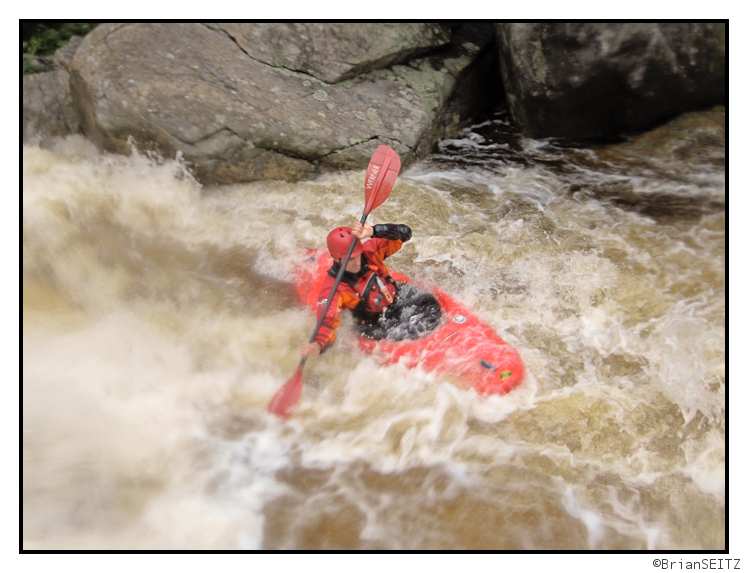
Me showing off the draw stroke
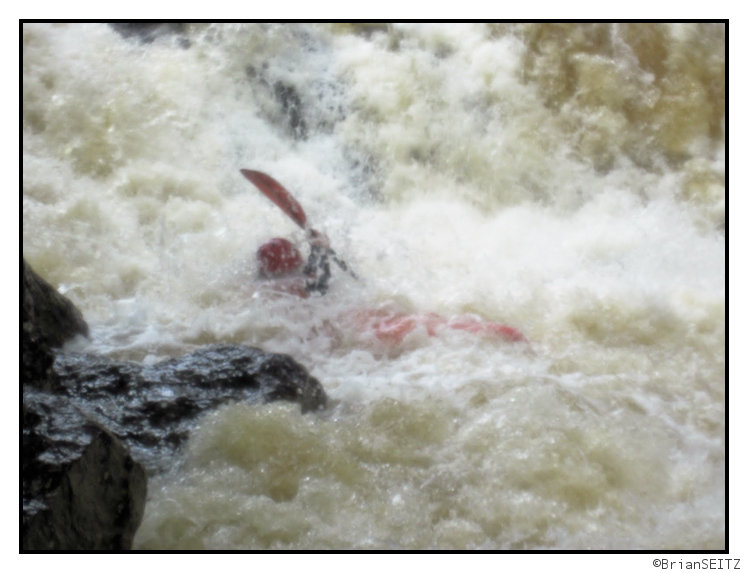
Me getting buried in the landing of Tunnel Falls
Eventually we came to a horizon line too big to see over and jumped out of our boats to scout. The 10’ Tunnel Falls stretched in front of us in all its manky glory. Fortunately, the line was straight-forward, and we all made it through without a hitch. Another IV+ ledge later, we eddied out to scout Tunnel Vision, the largest rapid on the river.
Read about the author: Ben
4 Comments

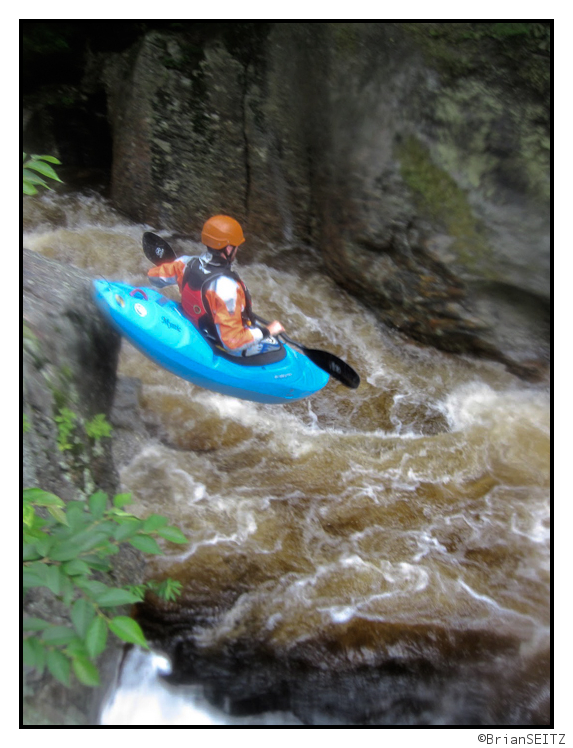
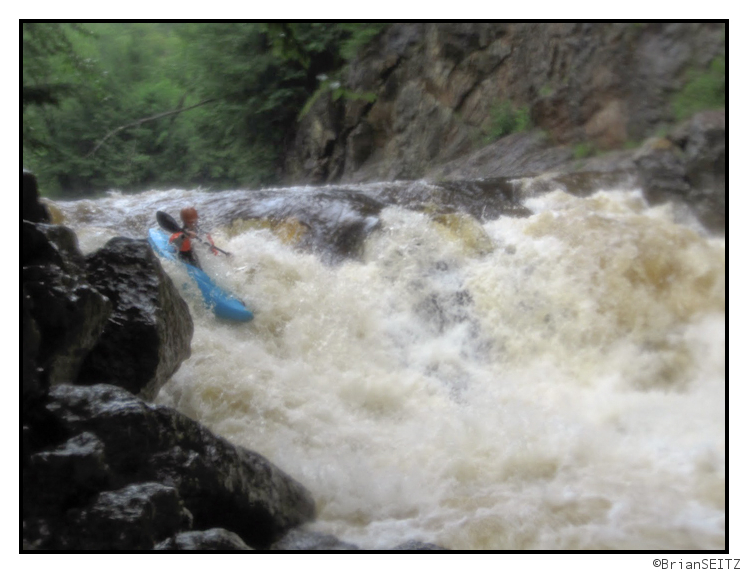
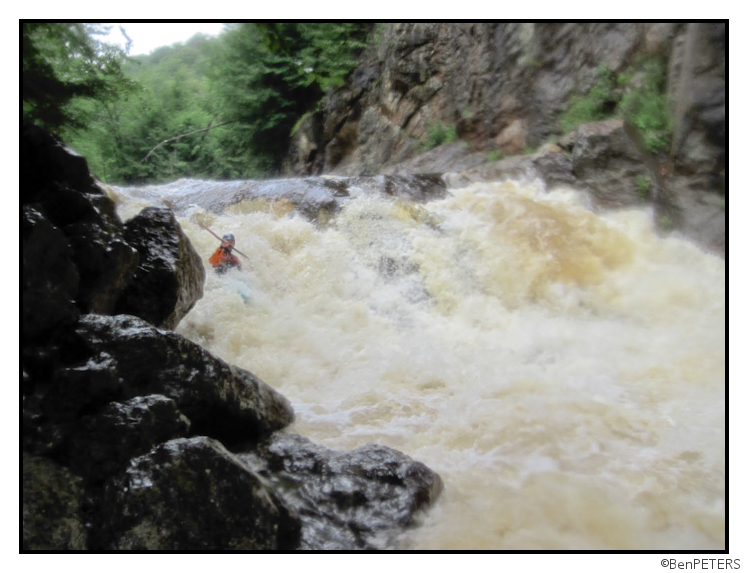


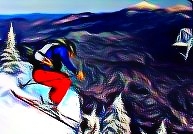


Lionel Hutz
wrote on August 14th, 2010 at 8:34 amCool Ben. Love it.
I wish I knew the need for water. I would have def. highlighted it in the weather reports. What’s the need for water…quick and fast like a t-storm? Steady rain? I suppose both works…good stuff.
Ben
wrote on August 14th, 2010 at 10:28 amWater’s tricky, it depends a lot on stuff like how wet it has been recently, how big a given drainage is, how much the trees are drinking, etc. But in general for summer boating, intense storms that drop more than an inch across a drainage are good candidates. Once the trees stop drinking for fall, even less rain can bring stuff up.
The best storms are the more widespread, dousing rains though, like when the hurricane remnants sweep through…
Harvey44
wrote on August 14th, 2010 at 10:11 amChris – you are one cool cucumber.
Greg
wrote on August 15th, 2010 at 11:20 amholy face shots!!!